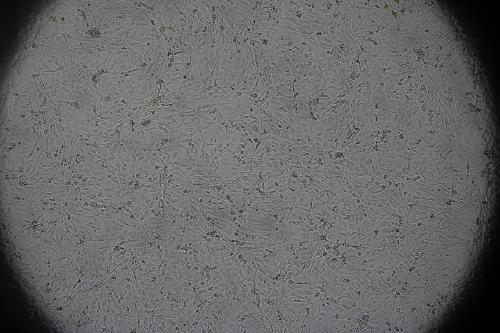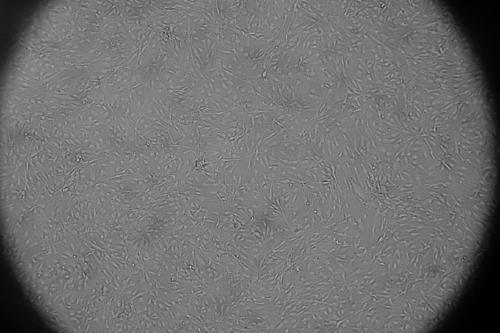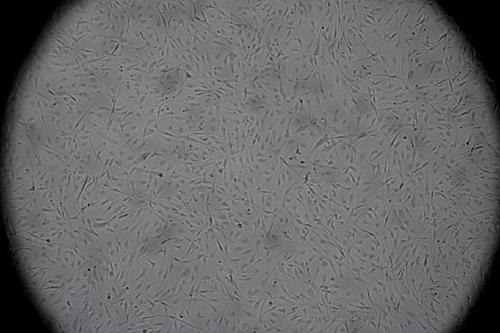Special fatty tissue digestion enzyme
An adipose tissue and special enzyme technology, applied in the field of stem cell separation, can solve the problems of adipose stem cell damage, affecting the shape and state of ASCs, and a small number of cells, and achieve the effects of good cell state, fast growth rate, and many passages.
- Summary
- Abstract
- Description
- Claims
- Application Information
AI Technical Summary
Problems solved by technology
Method used
Image
Examples
Embodiment 1
[0031] Example 1 Preparation of special enzymes for adipose tissue digestion
[0032] It is composed of components with the following concentrations, and the unit of each concentration is mg / L:
[0033] Collagenase Type I 100;
[0034] L-Glutamine 290;
[0035] Glucose 3100;
[0036] Ascorbic acid 25;
[0037] The balance is water.
[0038] The preparation method is as follows: take the above-mentioned components except water, classify and dissolve according to their respective solubility characteristics, then mix, add distilled water to make the final concentration of each component as above, adjust the pH value to 7.2, filter and sterilize with a 0.22 μm industrial filter element, That is to say, at the same time, nitrogen protection is used for aliquot packaging (to avoid oxidation of unstable components), and it is stored at -20°C.
Embodiment 2
[0039] Example 2 Using the digestive enzyme of Example 1 to digest adipose tissue and separate ASCs
[0040] Take the adipose tissue and wash it with PBS. After repeated several times, the washing solution has no blood color. Centrifuge horizontally at 1500r / min for 5min. Take 10ml of the upper layer of fat, add an equal volume of the digestive enzyme in Example 1, and place it on a constant temperature water bath shaker at 37°C. Digest at 120r / min for 60min. After the digestion was completed, the precipitate was collected by centrifugation, washed once with PBS and centrifuged again to collect the cells. The cells were resuspended in the stem cell serum-free medium and then transferred to a T25 square bottle. Placed in a 37°C, 5% CO2 incubator, cultured statically, and changed the medium for 24 hours. After that, the medium was changed every three days, and the cells were passaged when the confluence reached 80%.
Embodiment 3
[0041] Example 3 Continuous subculture of ASCs cells
[0042] Wash the 80% ASCs isolated in Example 2 once with PBS, add 1ml of the digestive enzyme in Example 1, and observe under a microscope. When 90% of the cells shrink and become round, add 5ml of PBS to stop the digestion, and pipette The tube was gently pipetted to dislodge the cells from the bottle wall, and a sample was taken for cell counting. Centrifuge horizontally at 1500r / min for 5min, collect the cells, resuspend the cells with 5ml stem cell serum-free medium, count again, and count as 10000 cells / cm 2 After inoculation at a density of 37 °C, 5% CO2 incubator, static culture, three days later the cell confluency reached 80% or more for passage.
PUM
 Login to View More
Login to View More Abstract
Description
Claims
Application Information
 Login to View More
Login to View More - R&D
- Intellectual Property
- Life Sciences
- Materials
- Tech Scout
- Unparalleled Data Quality
- Higher Quality Content
- 60% Fewer Hallucinations
Browse by: Latest US Patents, China's latest patents, Technical Efficacy Thesaurus, Application Domain, Technology Topic, Popular Technical Reports.
© 2025 PatSnap. All rights reserved.Legal|Privacy policy|Modern Slavery Act Transparency Statement|Sitemap|About US| Contact US: help@patsnap.com



